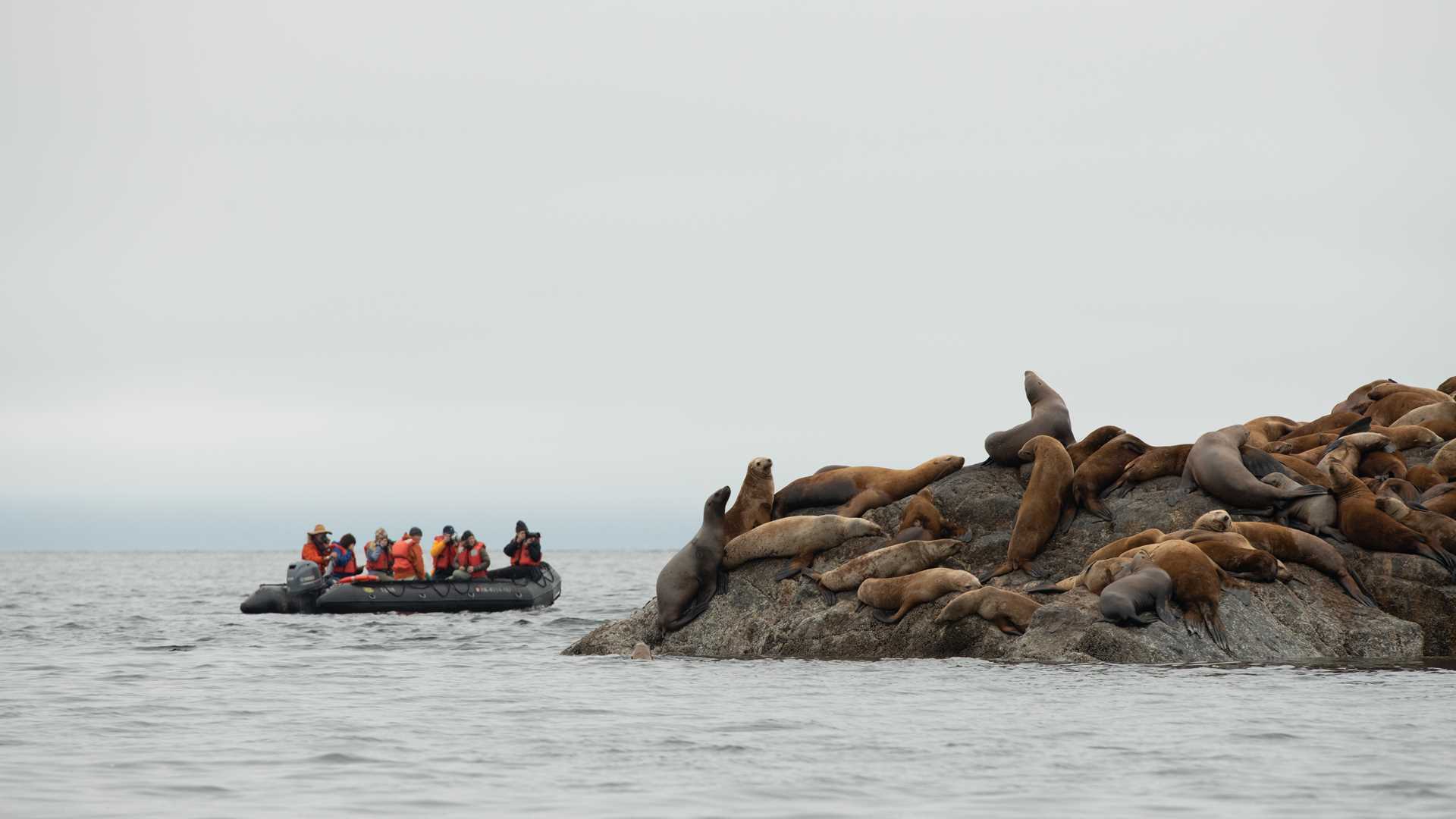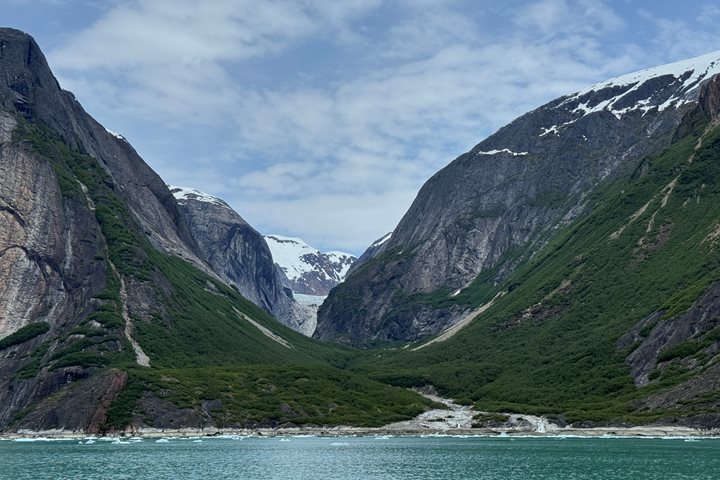At the extreme southernmost latitude of Southeast Alaska is a place called Grindall Island. Infamously remembered for its part in the fur trade, this bear-free island was once choice real estate for farming fox. Vestiges of this once-thriving market can still be seen along the trail leading from a small forest service cabin near today’s landing beach.
Dense forest dominates our hikes here and that density was palpable today. No more than 50 feet of forest separates the expansive audio scape of the open ocean from the muffled tones of the temperate rain forest. Walking inland was like donning a pair of noise-canceling headphones, where sound is dampened to a nearly inaudible hum. The only thing to break the silence were small passerines chittering in the distance. A small lake was the morning’s destination for most, preempted by various species of bog-loving plants and punctuated by the sweet, unadulterated sound of silence.
Back on the forest edge we changed speeds and took to the Zodiacs for a circumnavigation of Grindall Island. Clear waters and intertidal animals hugged the shore while annual residents like the Peale’s peregrine falcon perched above the waterline.
Dominating the seascape and olfactory senses was a haul-out of Steller sea lions. Noisily jostling and roaring for space atop their all too small rocks, these largest members of the sea lion family were none too concerned with our presence, offering plenty of entertainment from our perspective on the water.
While transiting to our afternoon destination we were sidetracked by four humpback whales busily coordinating with each other in a feeding strategy we call bubble-net feeding. Under a warm sun and blue skies, we watched this small group encircle, rise through, and engulf schools of small fish time after time until we had to pull away for our afternoon on Hump Island.
Hump Island Oyster Farm personifies small scale business practices with Alaskan grit and resourcefulness. The afternoon was spent touring this family-run oyster farm and learning about the ways these locals have learned to harvest a species that would not survive in these waters without them. Between guided tours of the operations facilities and an incredible spread of food and, of course, oysters, the afternoon was a culinary and educational highlight.







